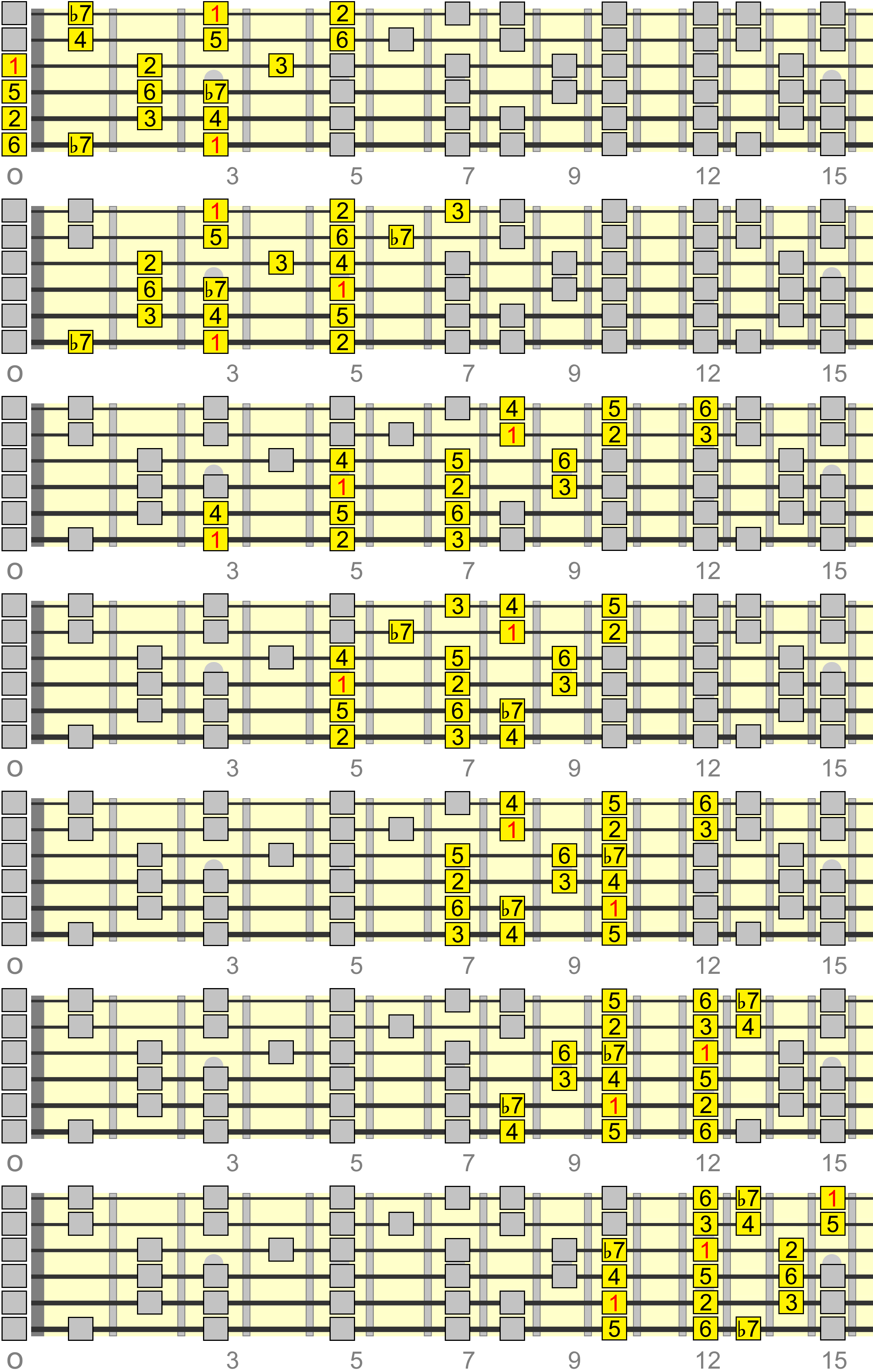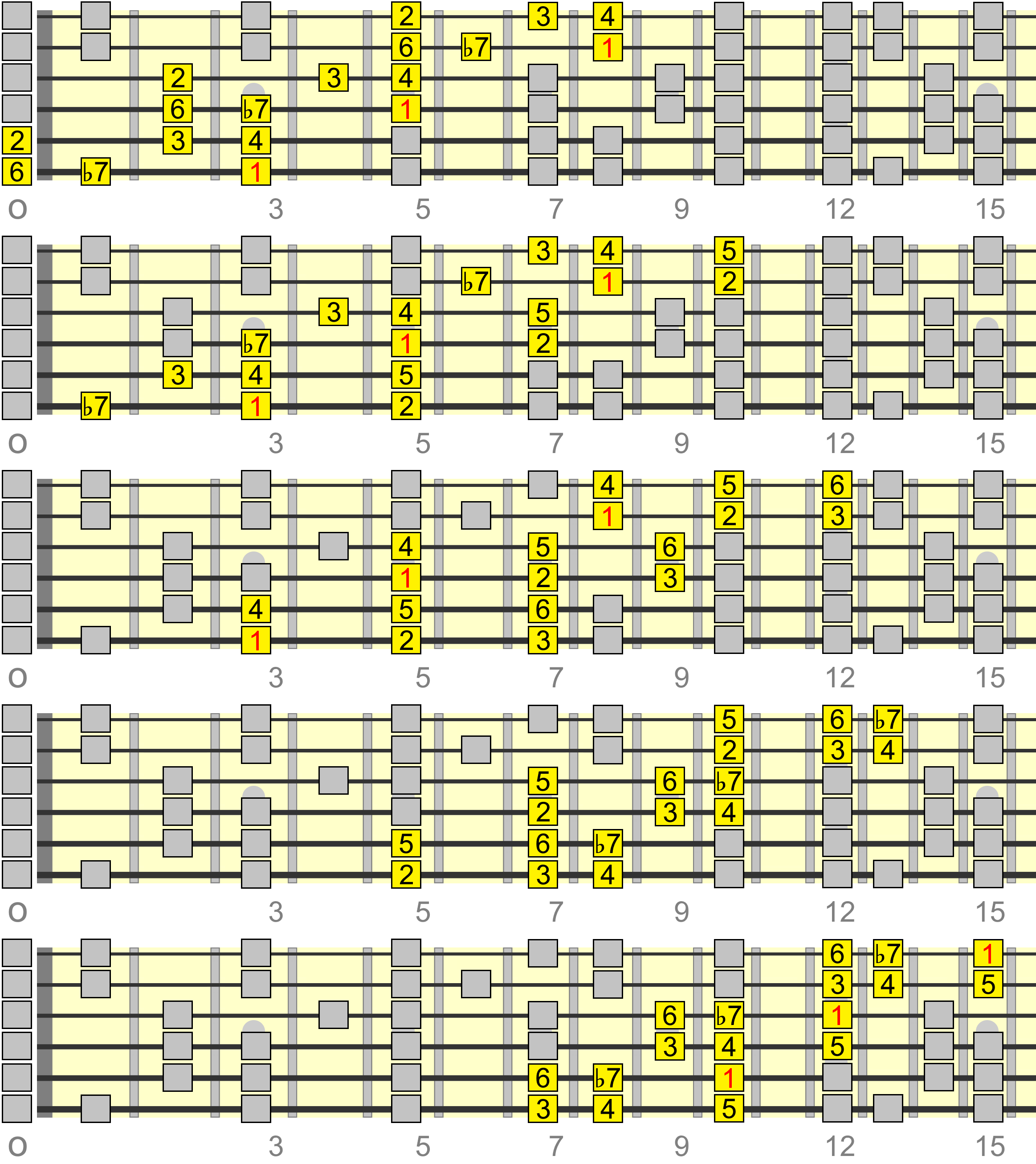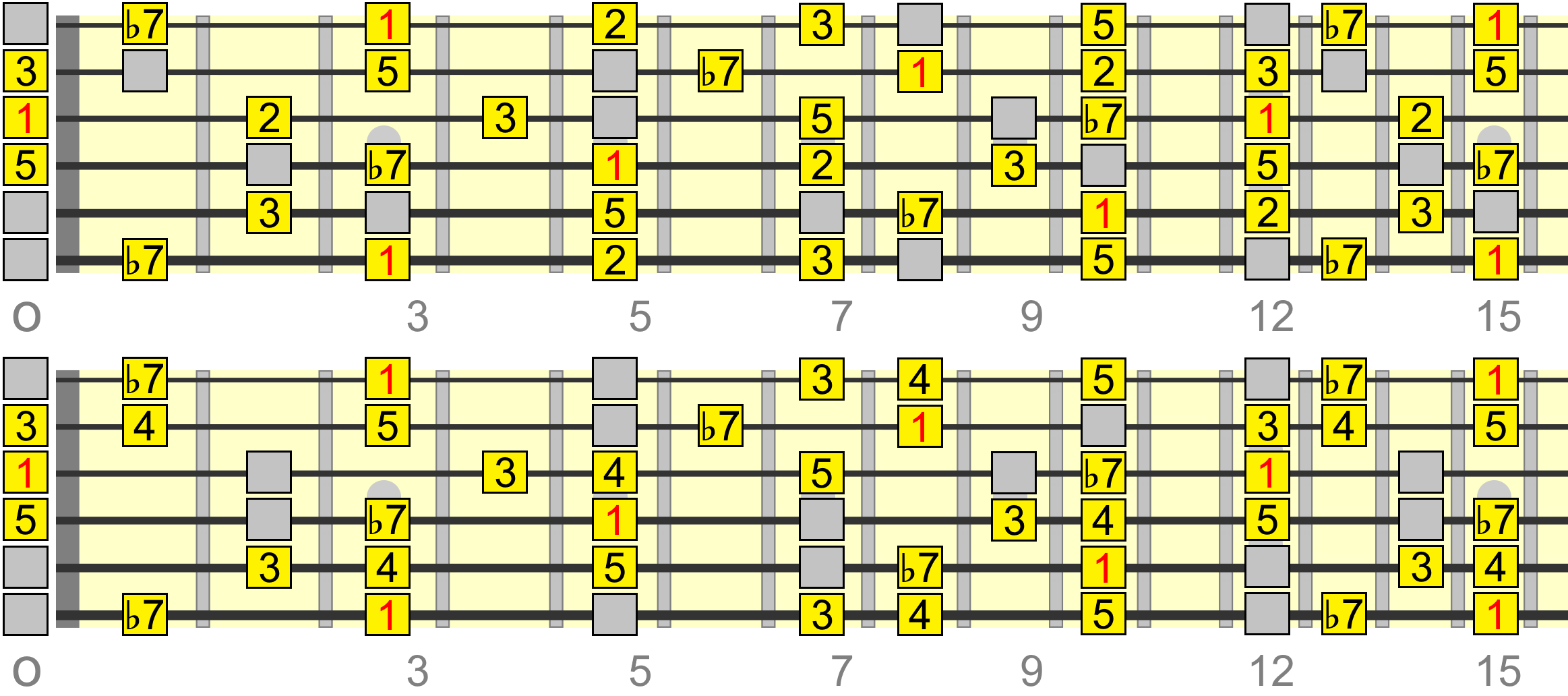Mixolydian Backing Tracks By Key
A Mixolydian
Parent Scale: D Major | Notes: A B C♯ D E F♯ G | Chords: A Bm C♯dim D Em F♯m G
A Major Track
Progression Tracks
Patterns
Note that the "box" tab displays patterns formed around two familiar barre chord positions rooted on the 5th and 6th strings. These are a good starting point for finding your bearings.
Also, don't forget you can combine Mixolydian with regular major pentatonic and blues phrases/licks. But I've included a couple of pentatonic patterns more specific to Mixolydian's flavour to try out.


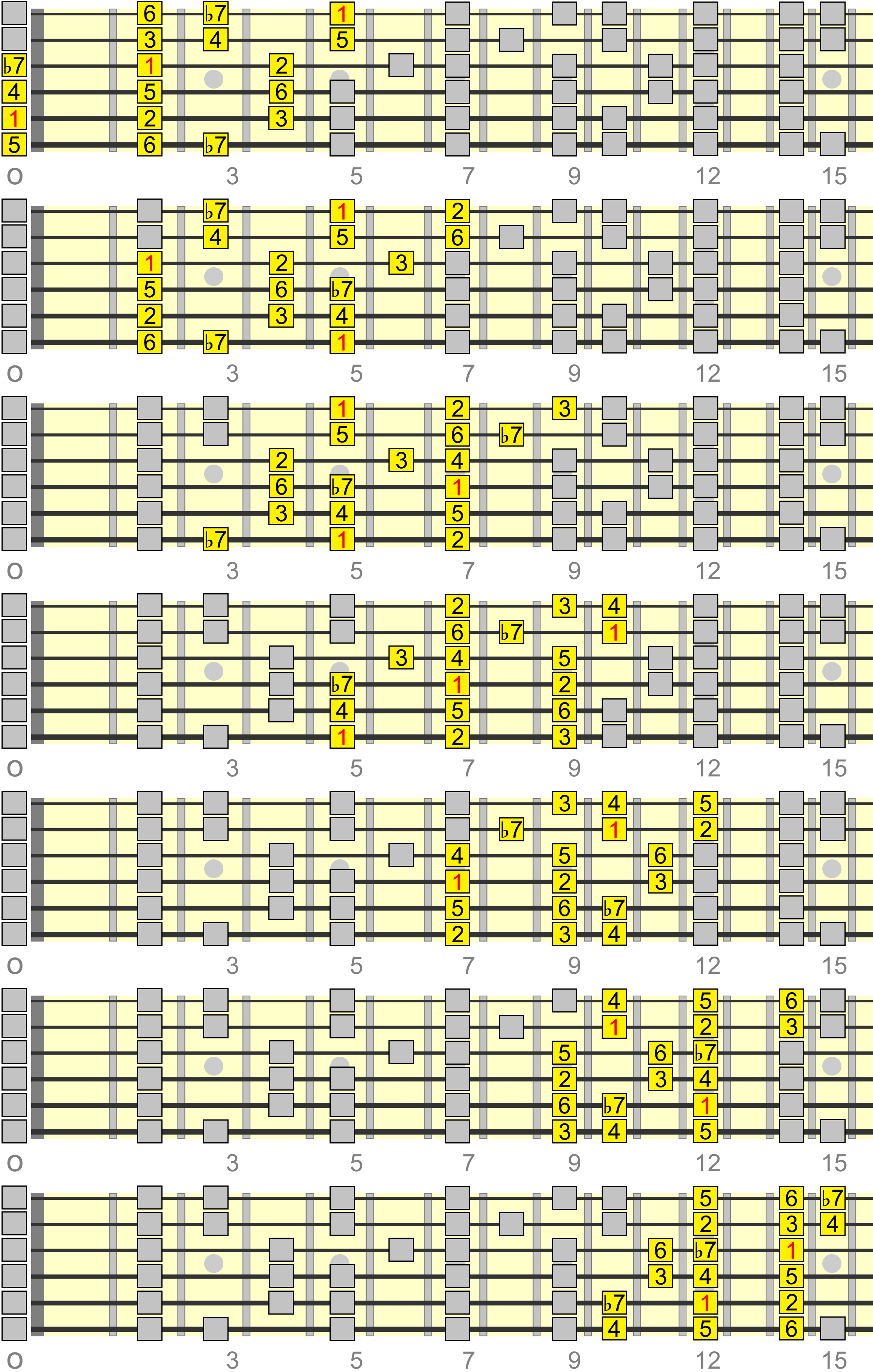
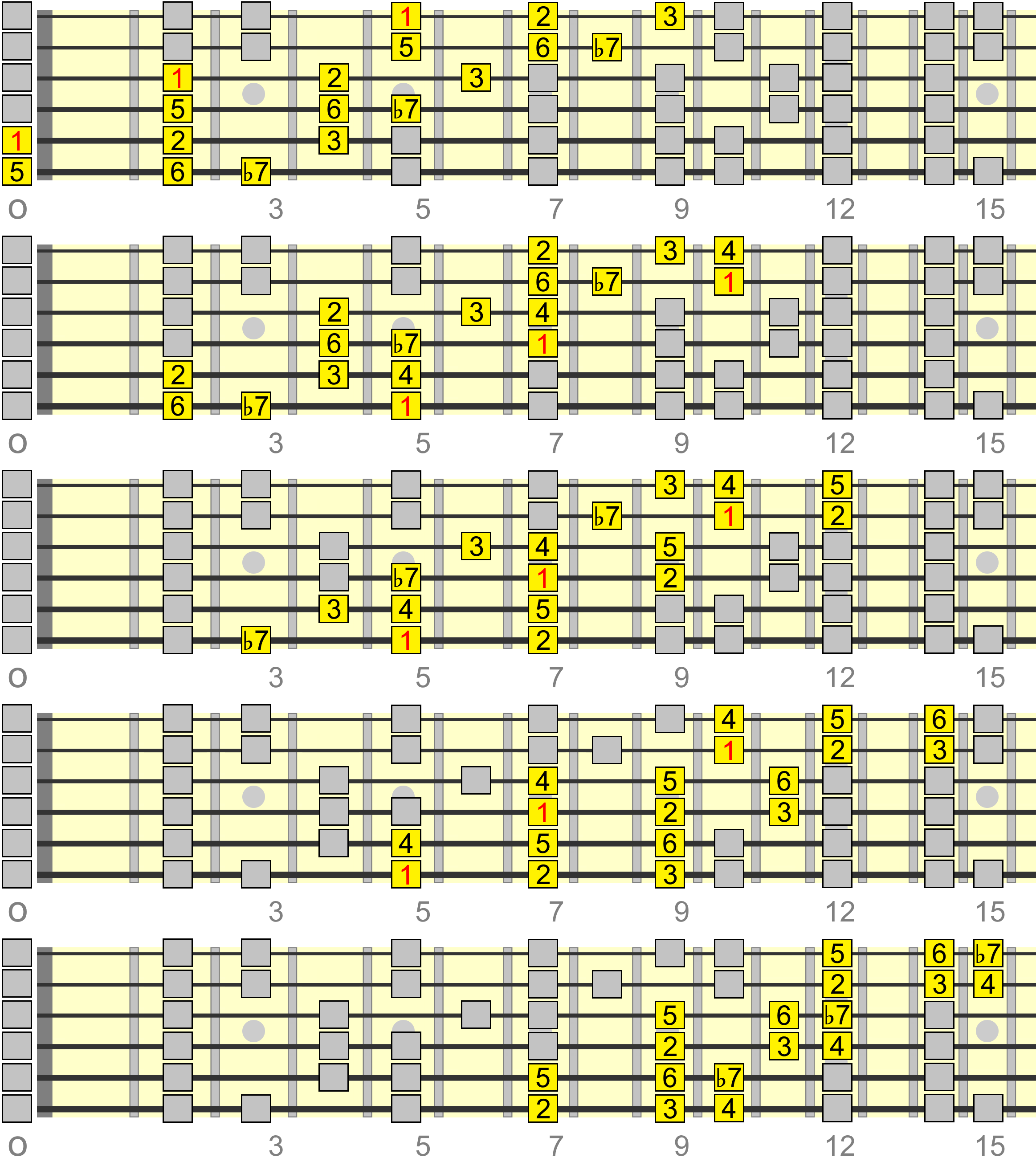
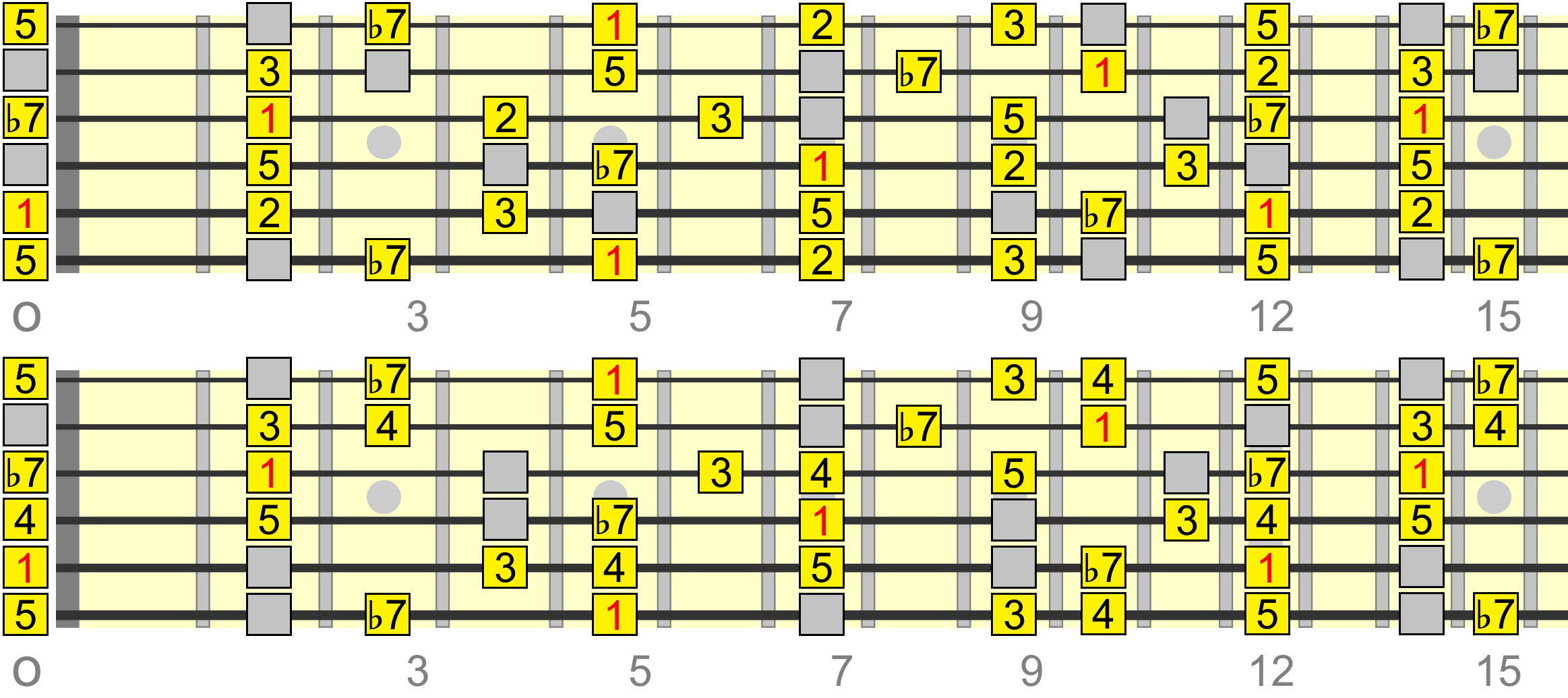
B Mixolydian
Parent Scale: E Major | Notes: B C♯ D♯ E F♯ G♯ A | Chords: B C♯m D♯dim E F♯m G♯m A
B Major Track
Progression Tracks
Patterns


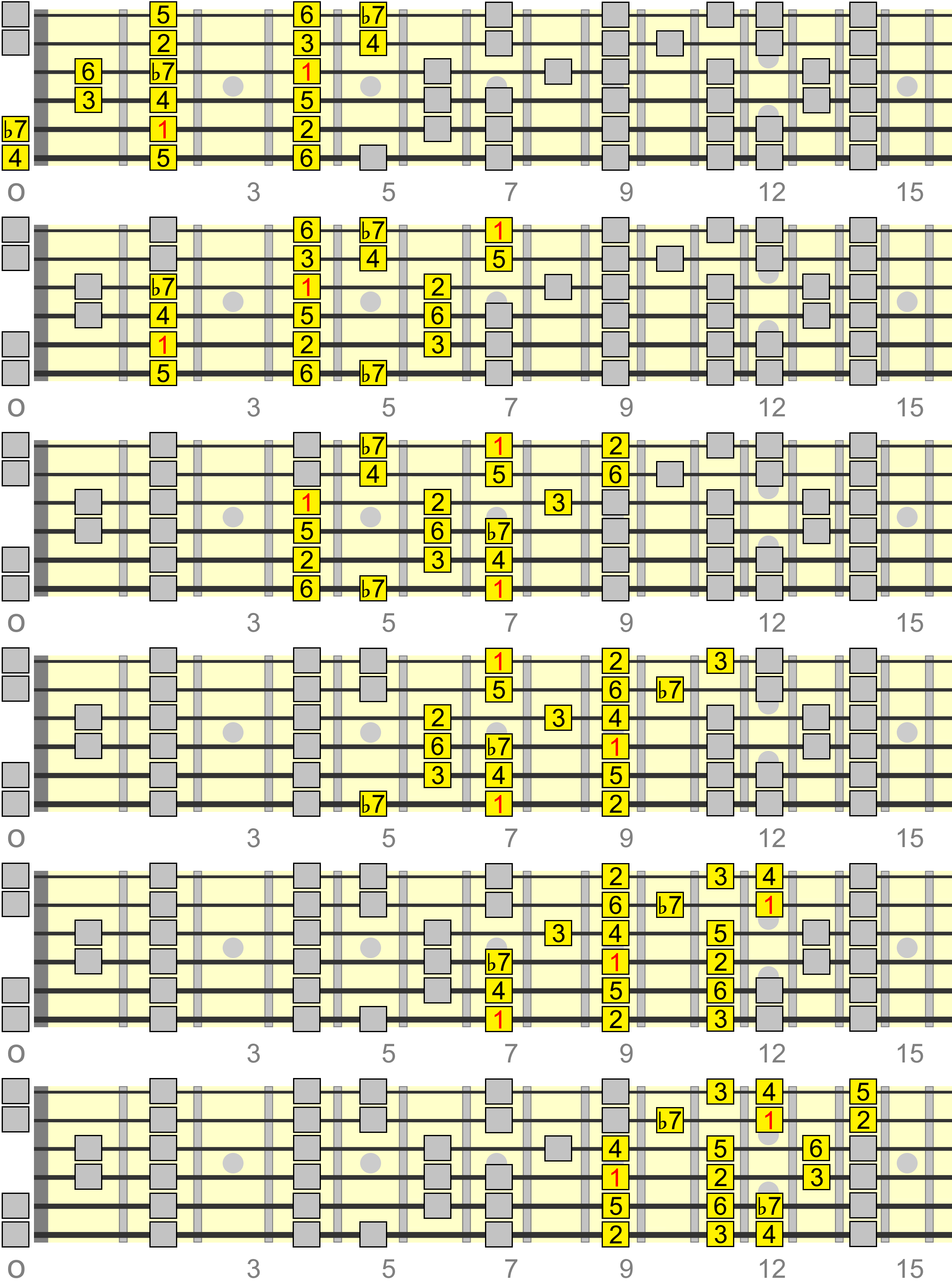
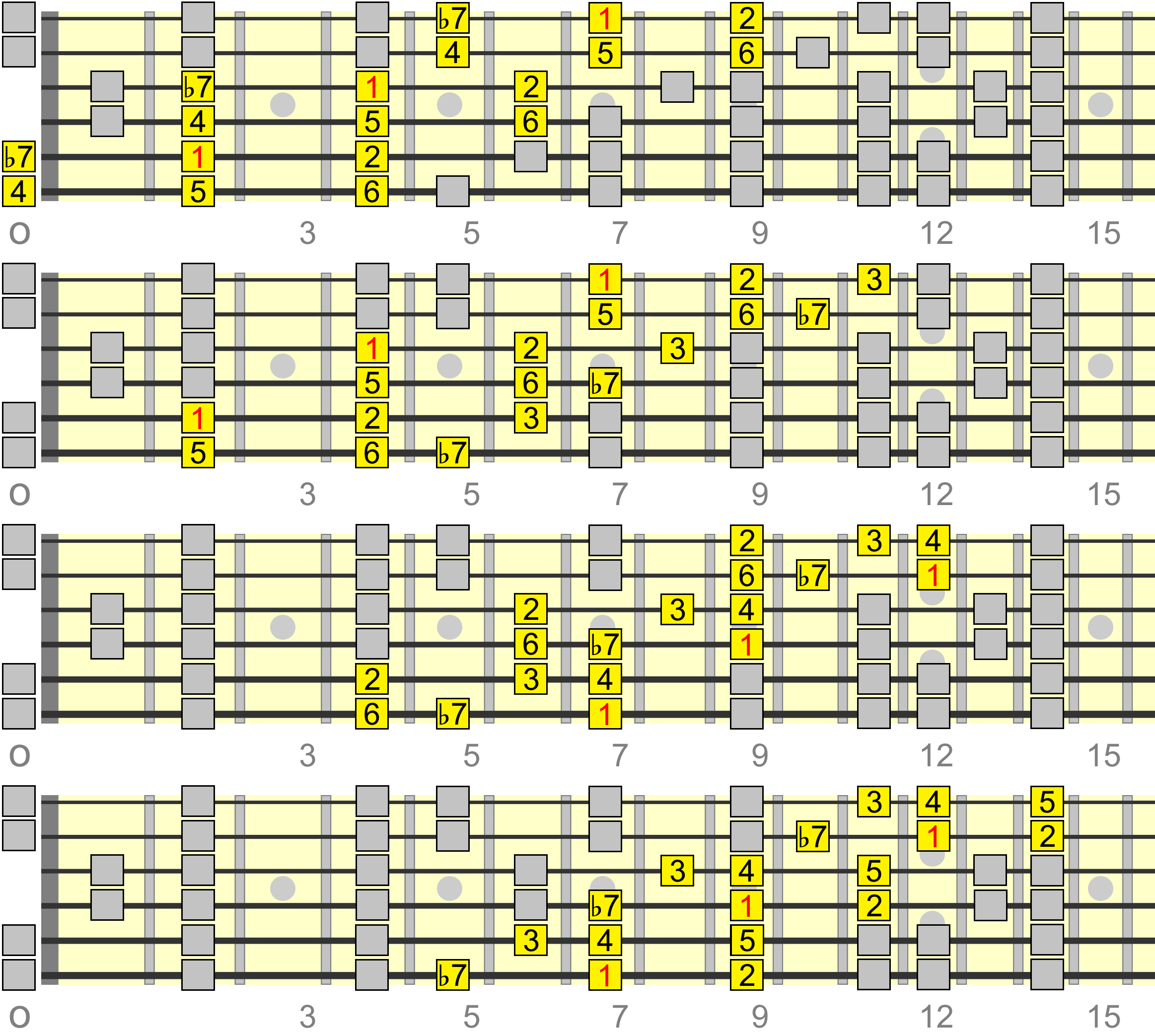
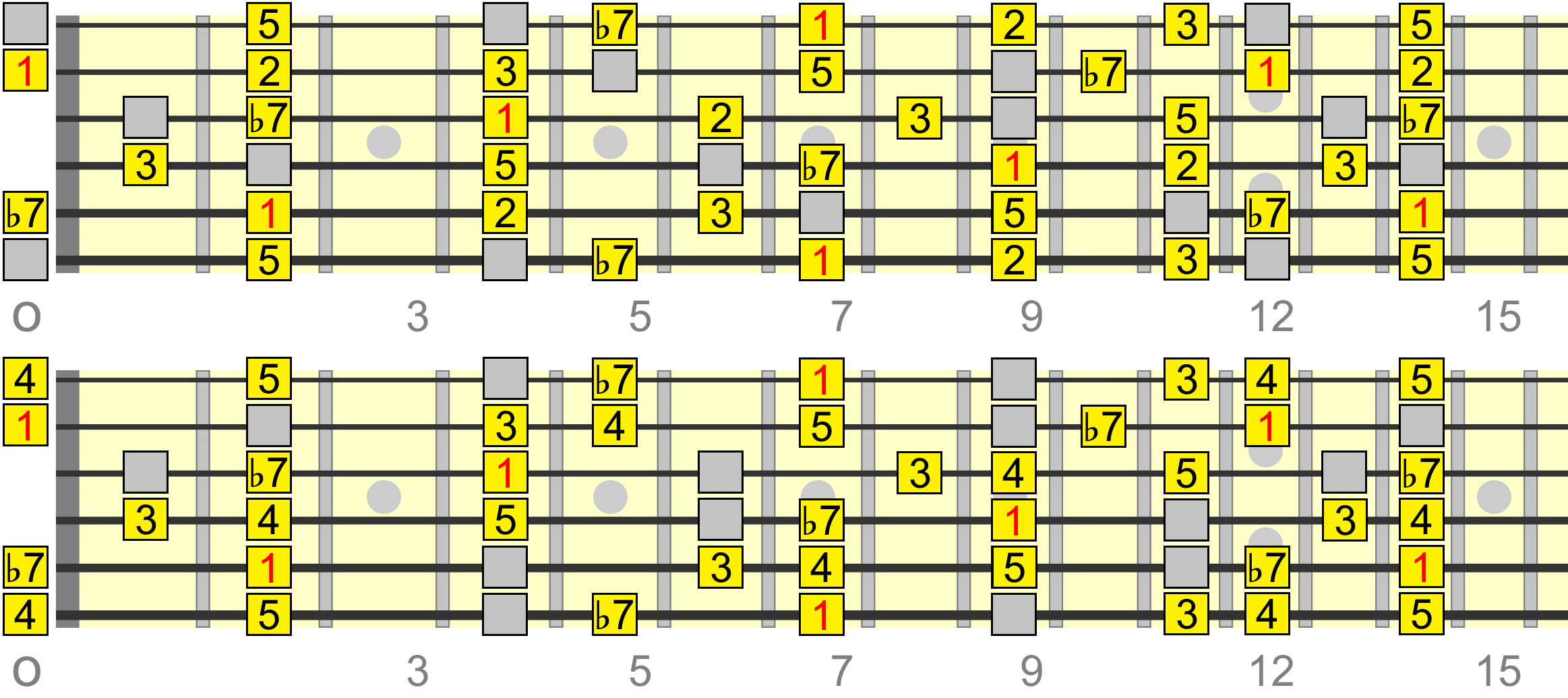
C Mixolydian
Parent Scale: F Major | Notes: C D E F G A B♭ | Chords: C Dm Edim F Gm Am B♭
C Major Track
Progression Tracks
Patterns


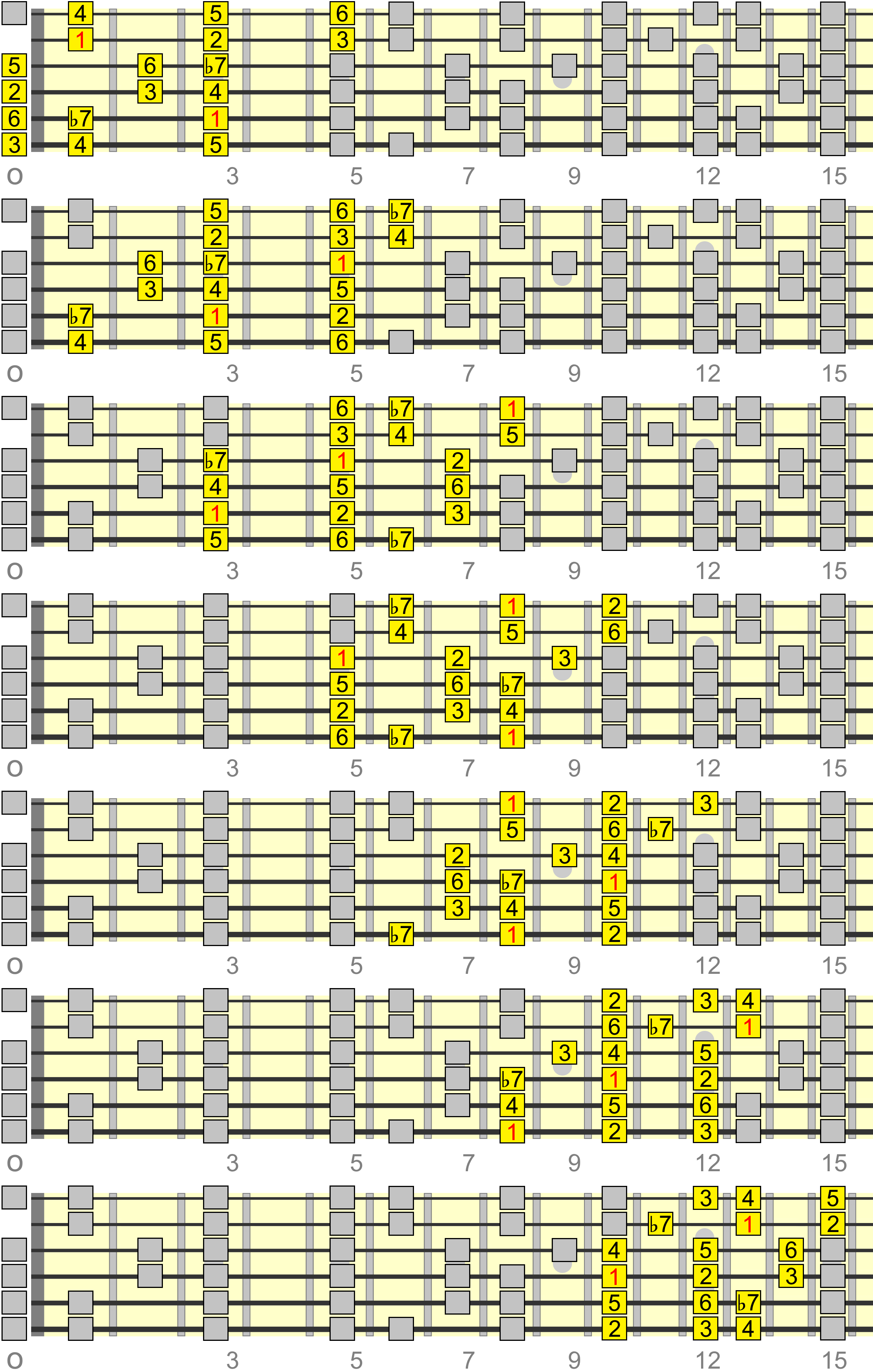
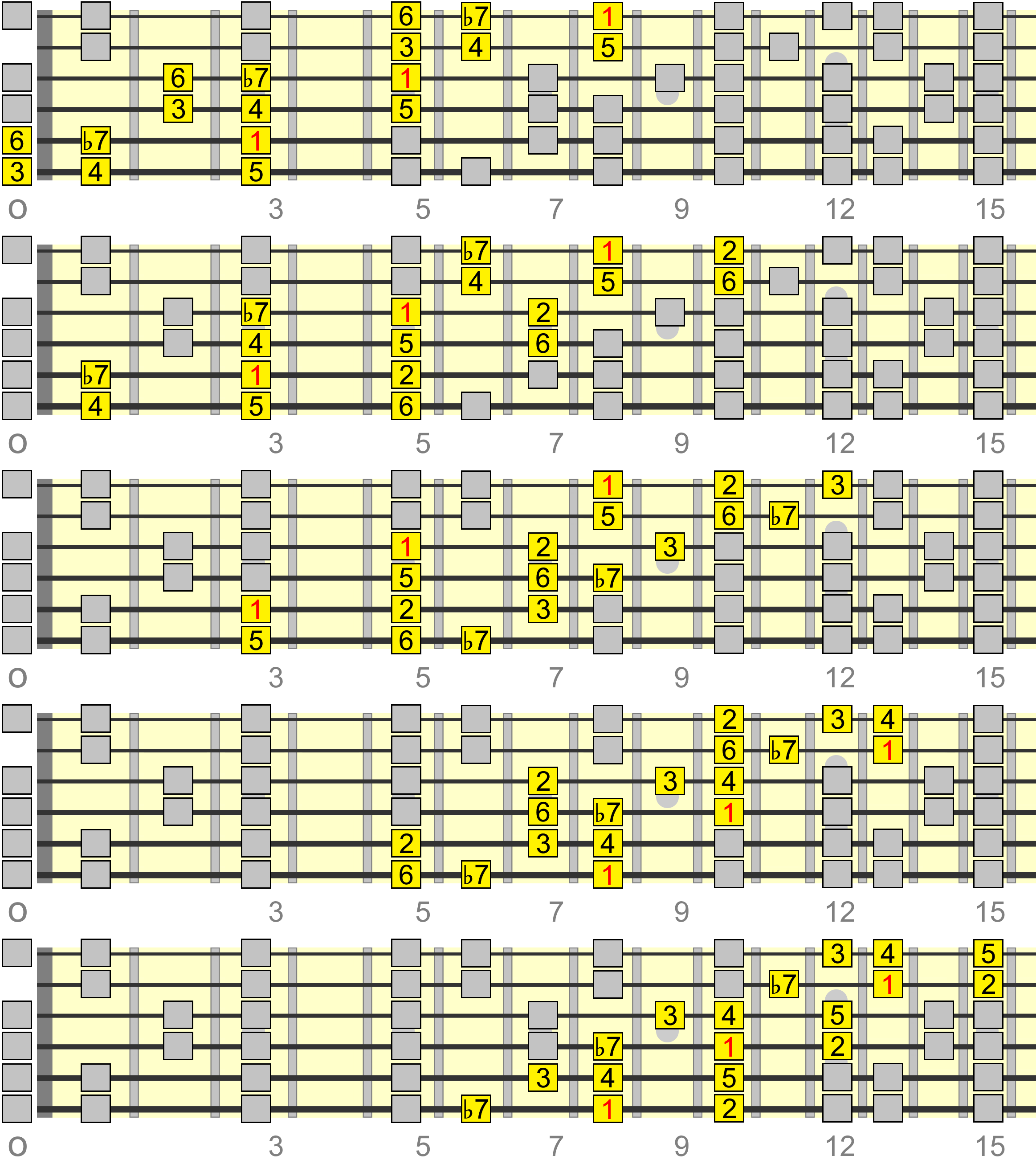
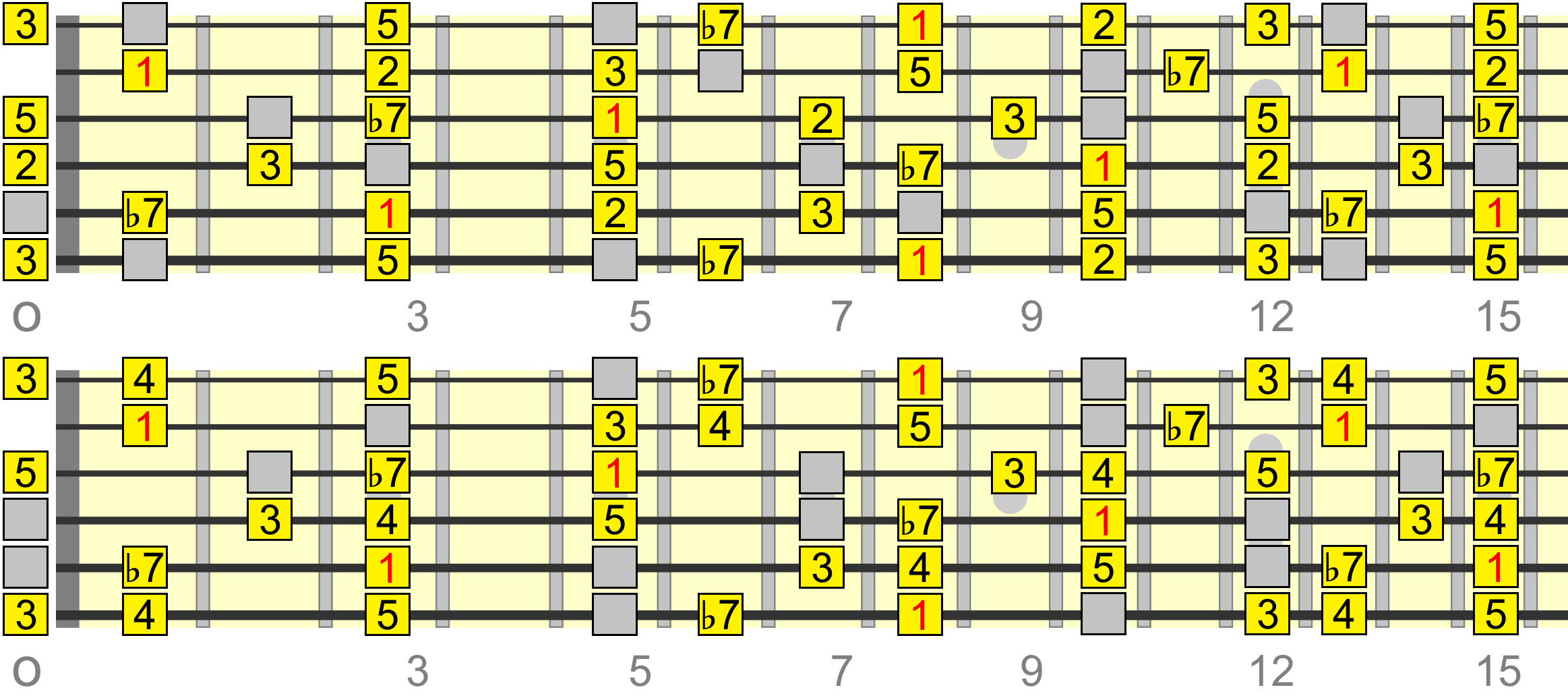
D Mixolydian
Parent Scale: G Major | Notes: D E F♯ G A B C | Chords: D Em F♯dim G Am Bm C
D Major Track
Progression Tracks
Patterns


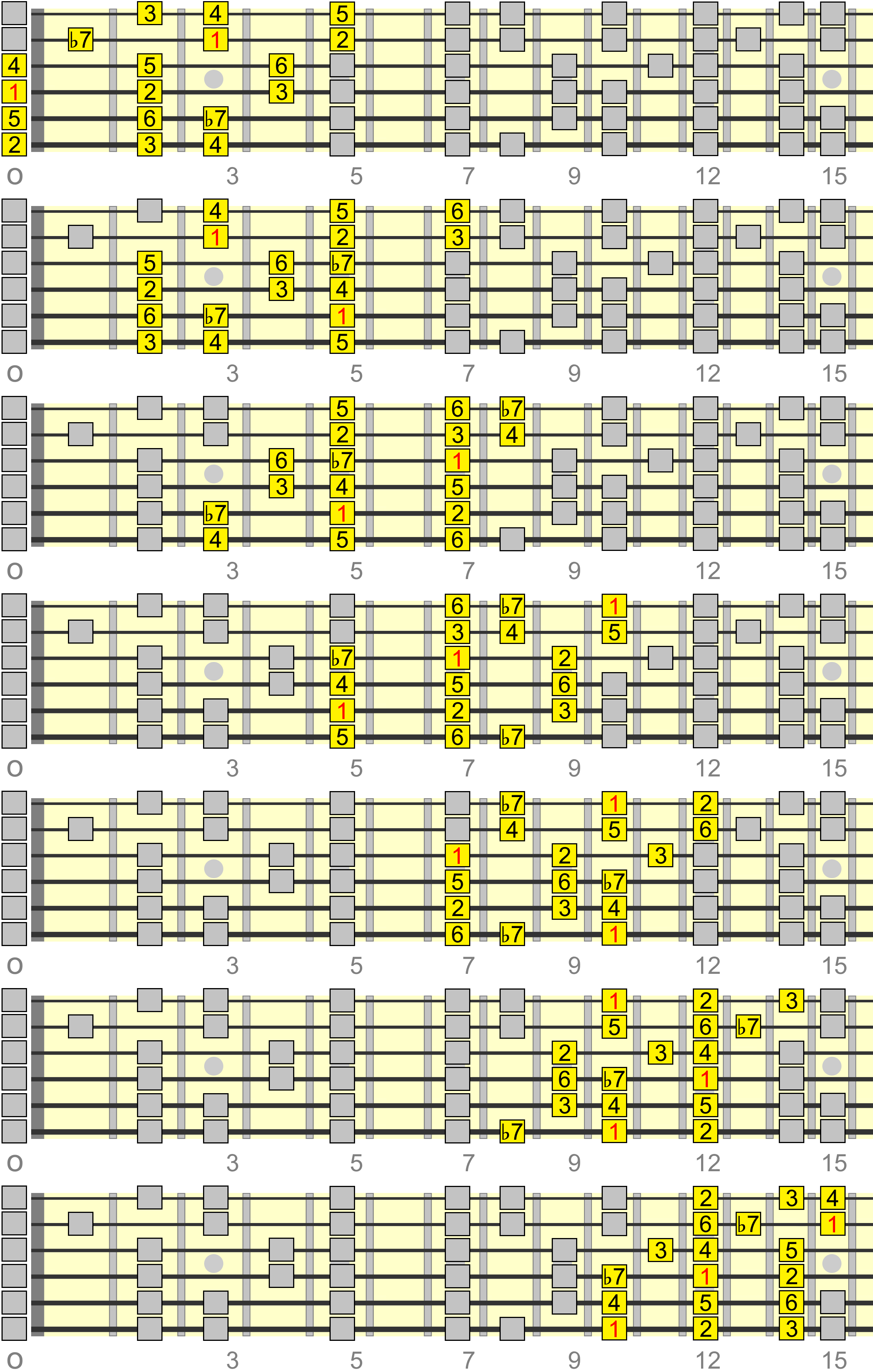
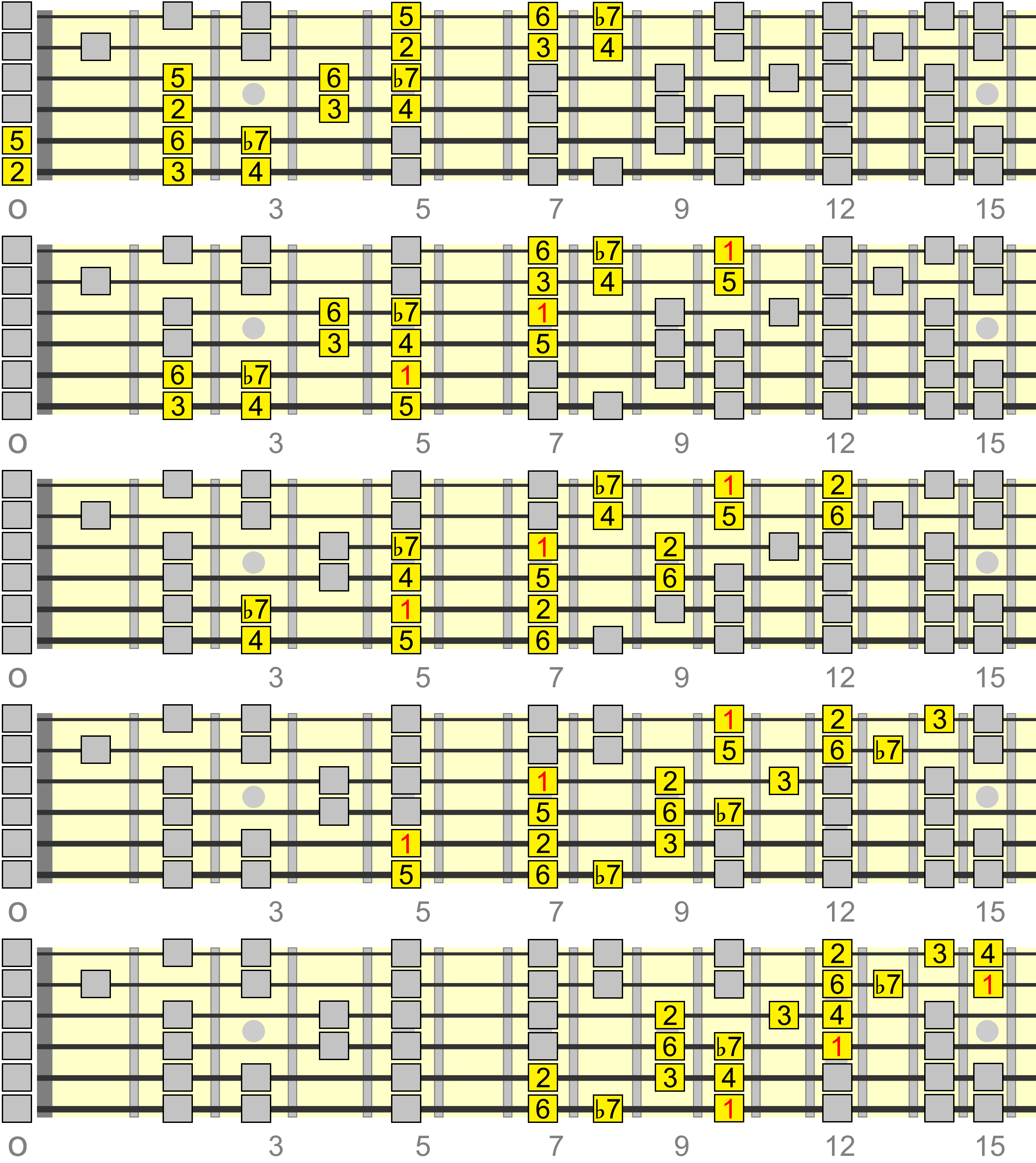
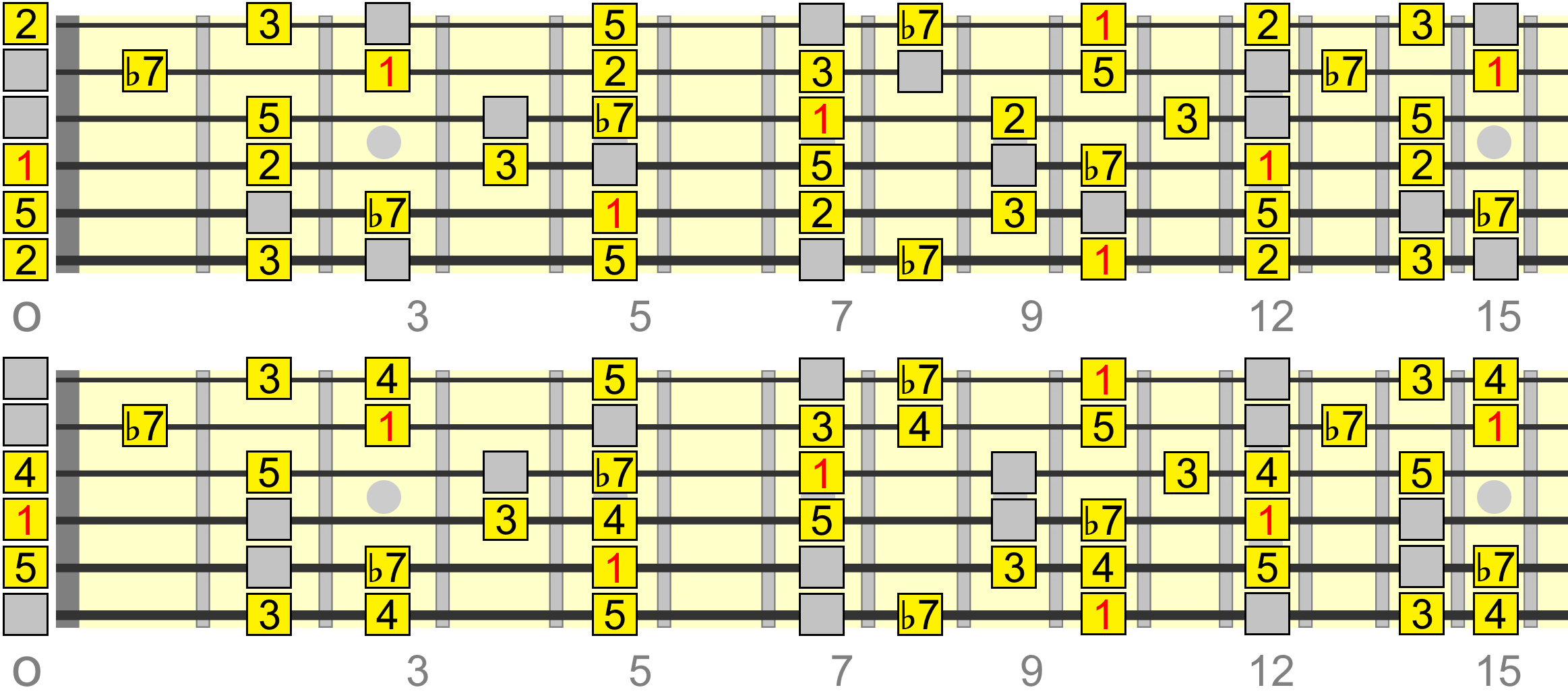
E Mixolydian
Parent Scale: A Major | Notes: E F♯ G♯ A B C♯ D | Chords: E F♯m G♯dim A Bm C♯m D
E Major Track
Progression Tracks
Patterns


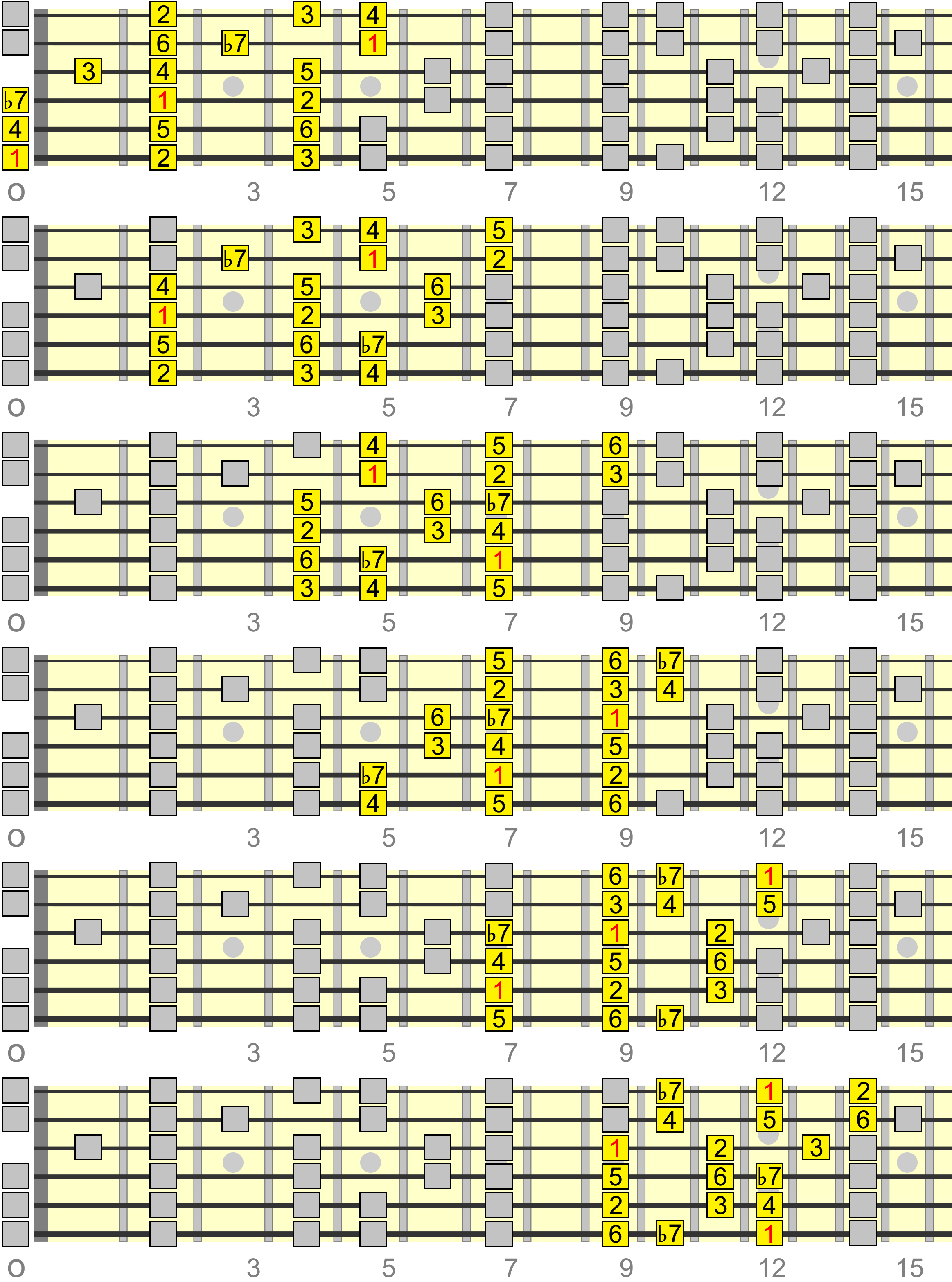
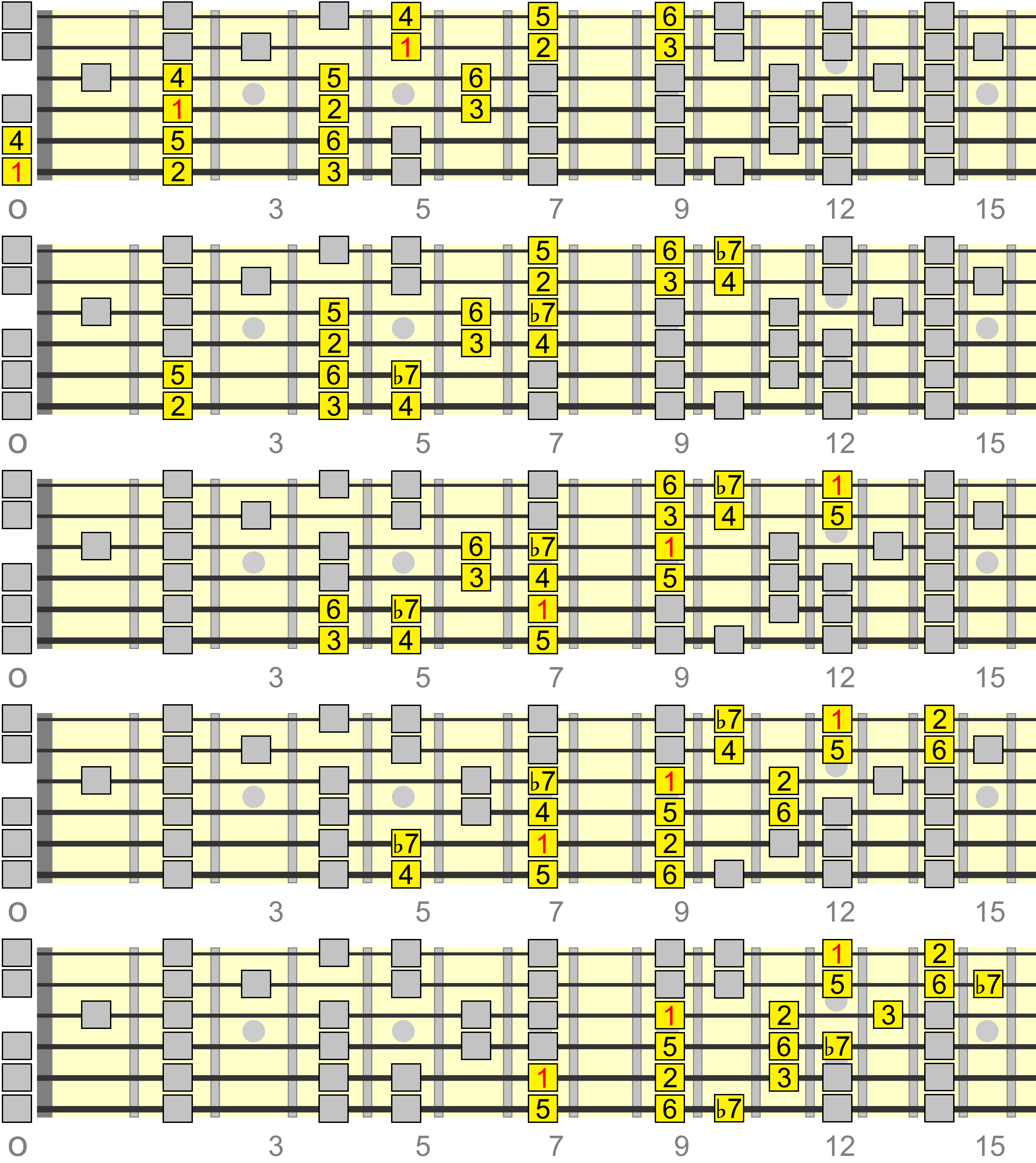
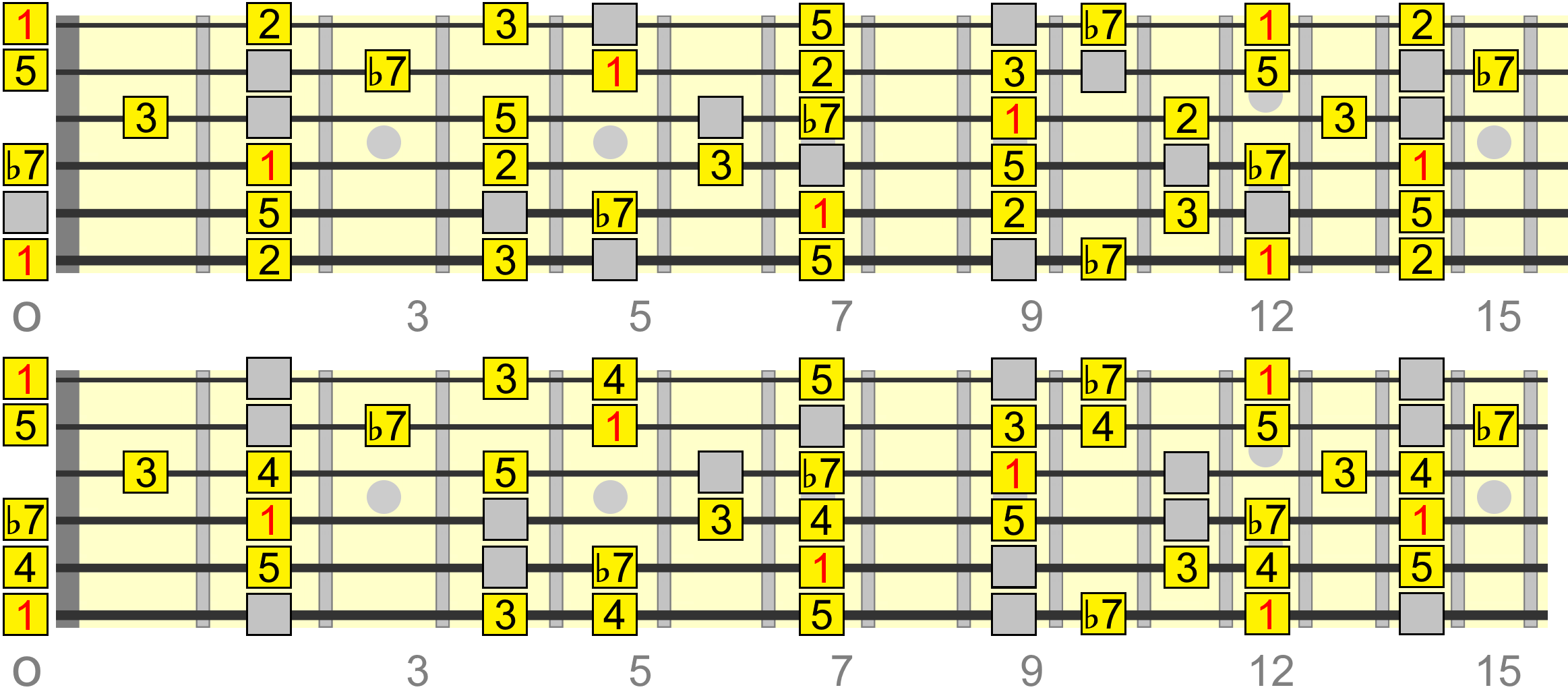
F Mixolydian
Parent Scale: B♭ Major | Notes: F G A B♭ C D E♭ | Chords: F Gm Adim B♭ Cm Dm E♭
F Major Track
Progression Tracks
Patterns


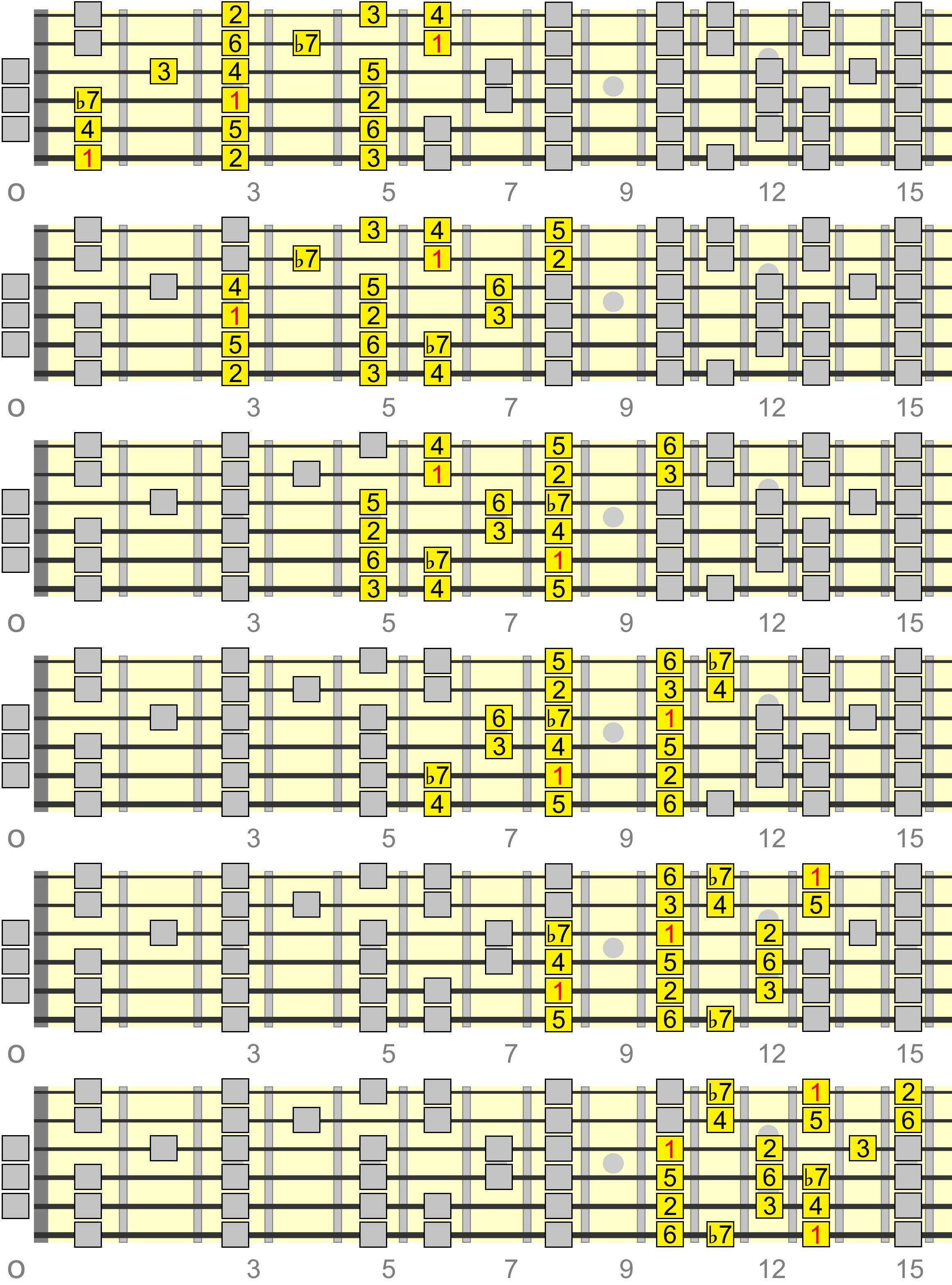
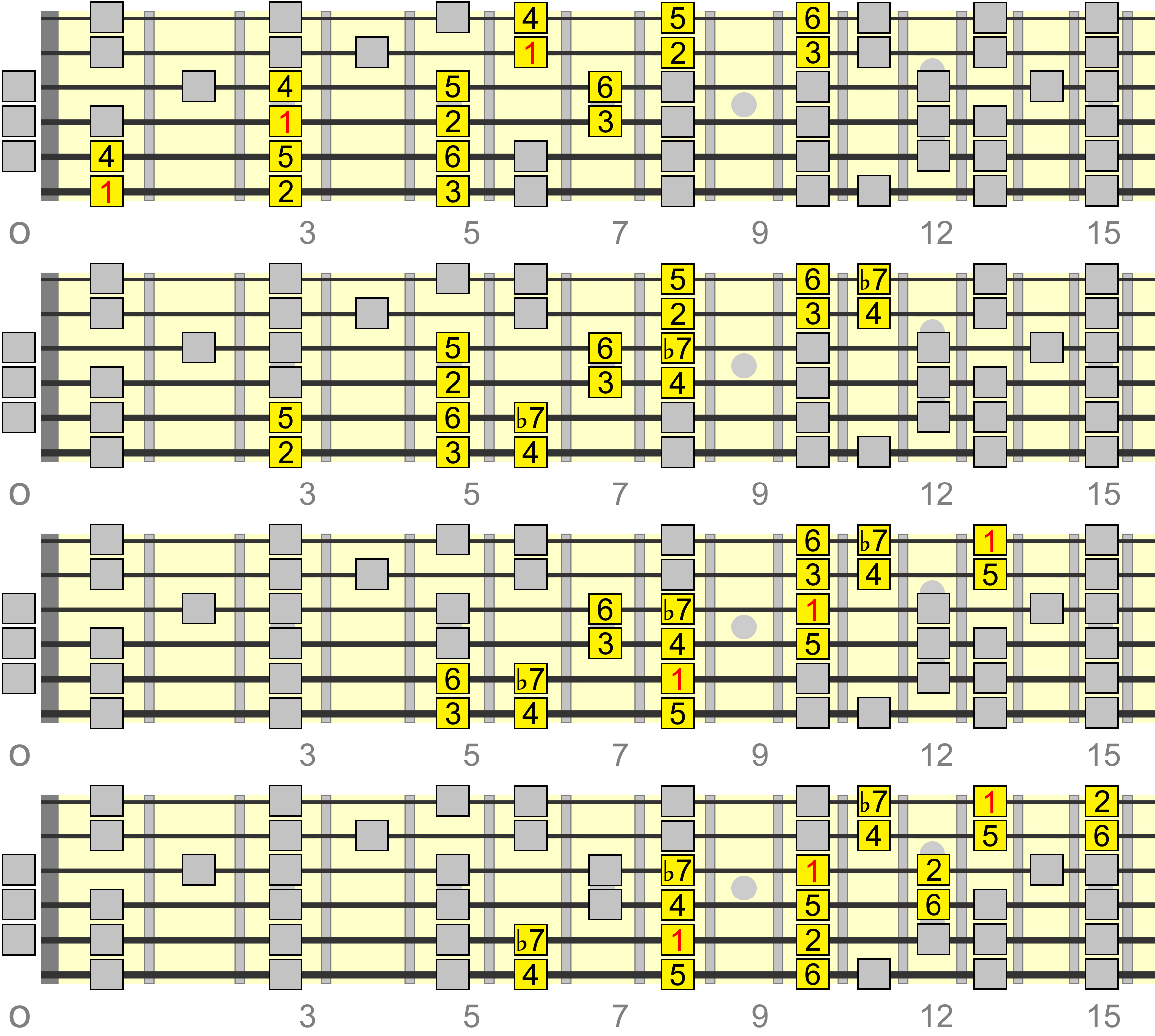
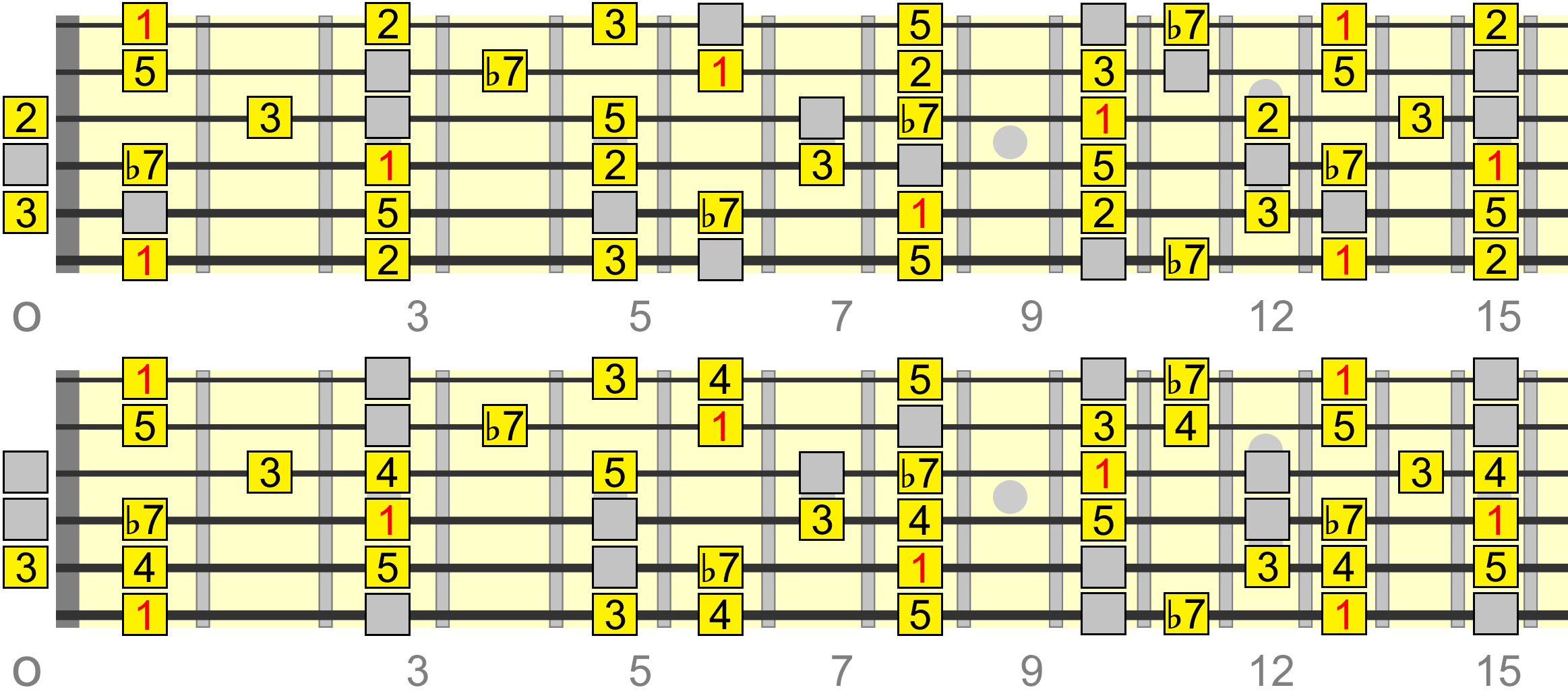
G Mixolydian
Parent Scale: C Major | Notes: G A B C D E F | Chords: G Am Bdim C Dm Em F
G Major Track
Progression Tracks
Patterns


